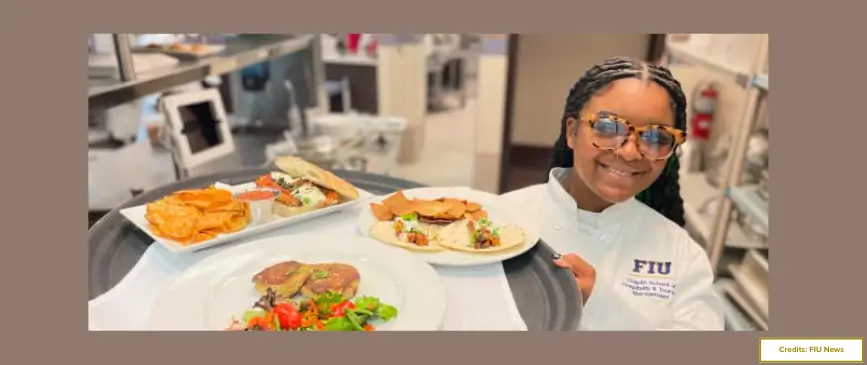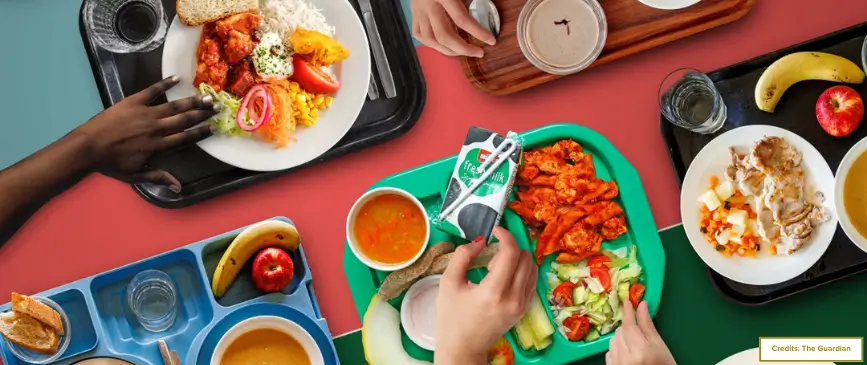Introduction
Most schools nationwide already practice recycling, but composting is the next big step toward sustainability. Every day, school cafeterias generate significant amounts of food waste. In fact, one lunch period alone can result in hundreds of pounds of material destined for landfills. When that waste decomposes in landfills, it releases methane, a potent greenhouse gas that worsens climate change.
By starting a composting program in your cafeteria, your school not only reduces its environmental footprint but teaches students about sustainability, saves money on waste hauling, and builds pride in creating a healthier learning environment.
As a cafeteria redesigning specialist, ICC has supported schools of all sizes in implementing sustainable practices, including waste-reduction initiatives and modern school cafeteria organization systems.
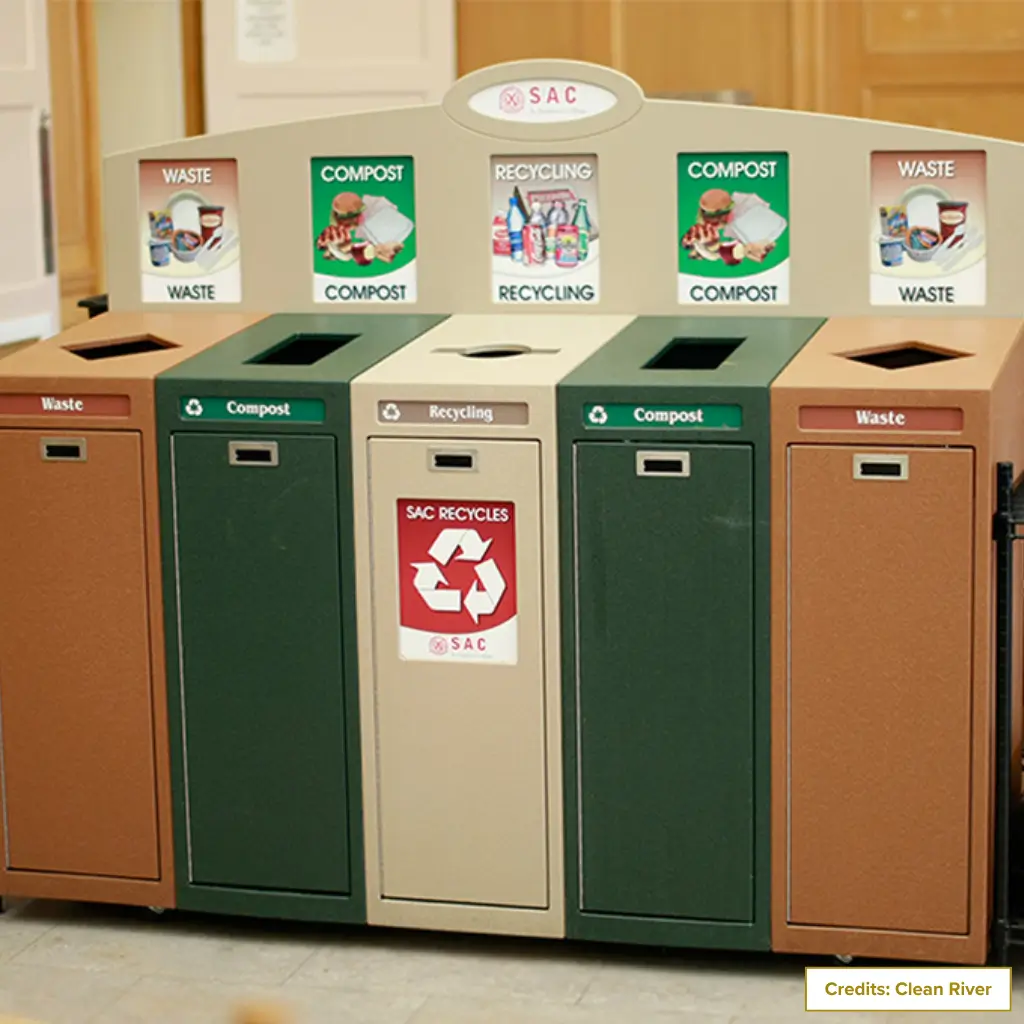
What is Composting and Why Does it Matter in School Cafeterias?
Composting is the natural process where microorganisms, worms, and fungi break down organic waste—like food scraps and napkins—into nutrient-rich soil. In the cafeteria context, composting makes a direct impact:
- Environmental: Diverts waste from landfills and reduces methane emissions.
- Educational: Gives students hands-on experience in ecology, biology, and sustainability.
- Financial: Reduces trash pickup frequency and saves on disposal fees, making composting compatible with realistic school cafeteria budgeting.
The U.S. Environmental Protection Agency (EPA) recognizes the importance of reducing food waste, even offering a “Food: Too Good to Waste” toolkit. A composting program helps schools put such principles into daily practice.
Benefits of a School Cafeteria Composting Program
A well-run composting program produces a ripple effect of benefits:
- Reduces cafeteria garbage volume.
- Returns nutrients to the soil for school gardens and landscaping.
- Supports erosion control and healthier soils.
- Decreases costs related to waste hauling.
- Builds a culture of environmental stewardship among students.
- Strengthens community connections with local farms and gardens.
- Encourages more efficient purchasing and can even improve school cafeteria food planning.
For ICC, composting is part of a larger strategy: helping schools transition toward a zero-waste school cafeteria that is healthier, more efficient, and inspiring for students.
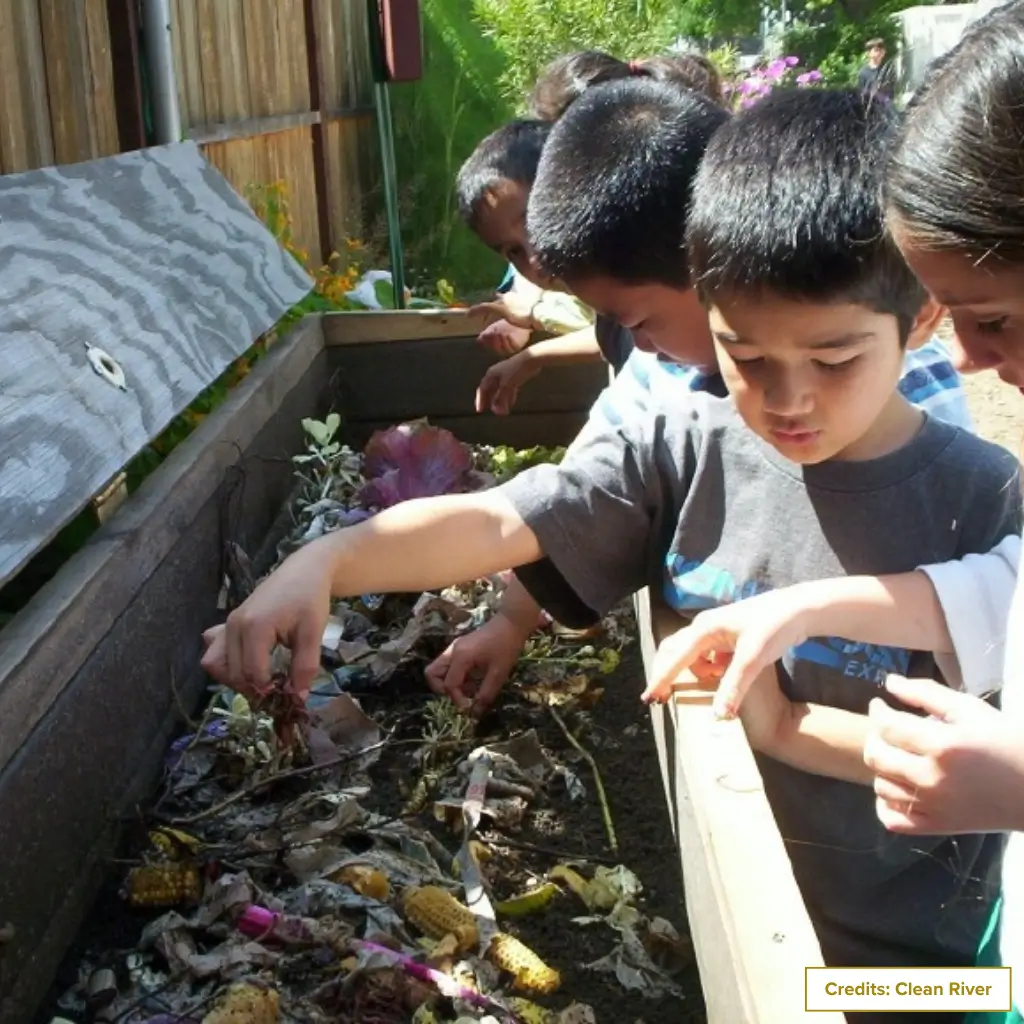
8 Steps To Start A Compost Program At Your School
Step 1: Assess Your Cafeteria’s Food Waste
Begin with a waste audit to understand how much food waste your cafeteria produces. For one week, separate cafeteria trash into compostables, recyclables, and landfill waste. Weigh and record the amounts daily. Note common contaminants, like plastic wrappers, that mistakenly end up in compost.
Example: A school that produces 60 pounds of compostable scraps daily will need bins and a collection schedule for nearly 300 pounds each week.
Step 2: Build a Composting Team
Form a team with administrators, custodial and kitchen staff, parents, and students. This group will champion the program, keep momentum, and encourage behaviors that naturally encourage good manners around shared responsibility for cafeteria waste. Meetings should be monthly in the first year, shifting to quarterly once the system runs smoothly.
Step 3: Follow School Protocols and Garner Support
Every school system has procedures for introducing new programs. Secure approval from your district, follow established procedures, and highlight the educational benefits—engage the community with presentations, parent newsletters, and student assemblies. Many schools also align composting with health and wellness initiatives, such as food safety training for school cafeteria staff, ensuring that nutrition and sustainability goals are met.
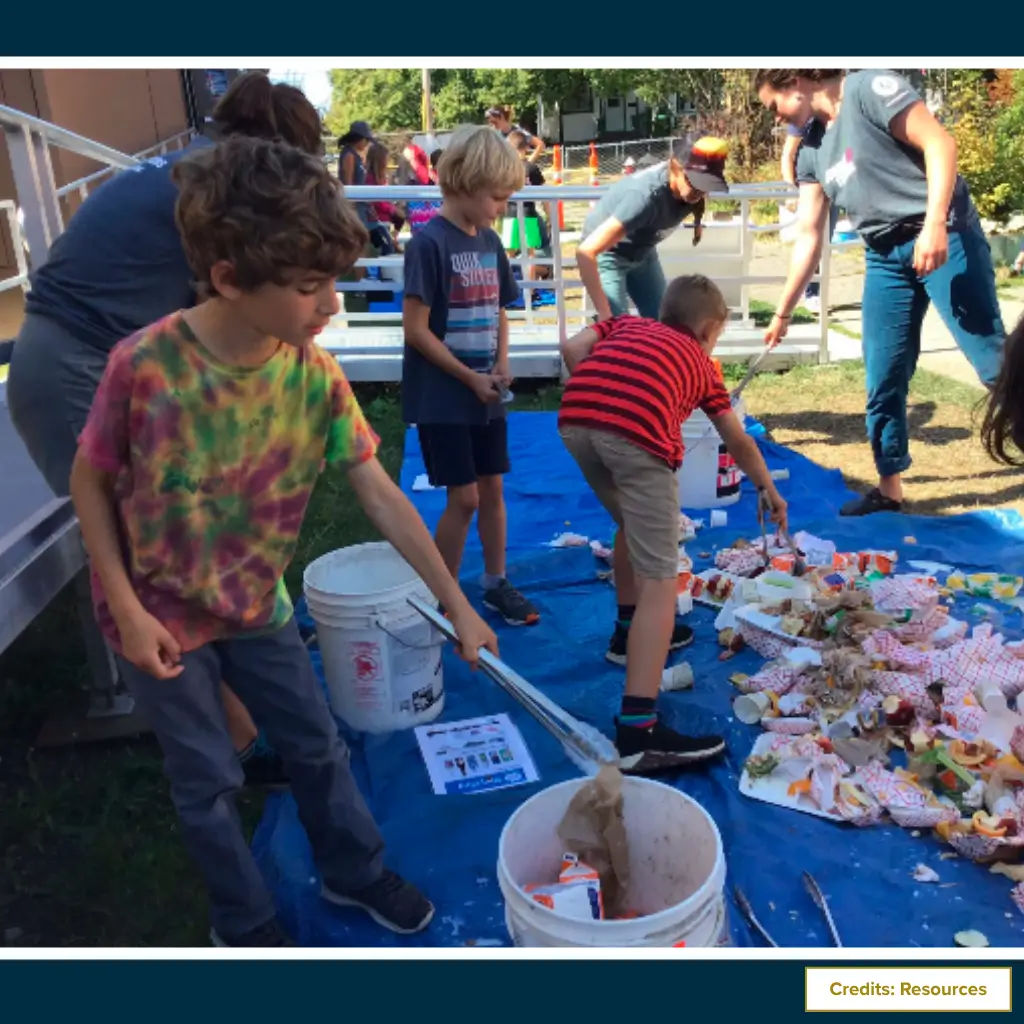
Step 4: Choose the Right Composting Method
Not every school has the same resources or space. Options include:
- On-site composting: Outdoor bins or worm bins for student-led learning.
- Off-site composting: Partnering with farms or commercial composters.
- Hybrid: Classroom-scale worm composting alongside commercial pickups.
ICC often integrates composting with other upgrades like digital cafeteria boards for clear waste sorting instructions, menu transparency, and sustainability updates when redesigning cafeteria spaces.
Step 5: Set Up the System
Once the method is chosen, create a clear collection system:
- Sorting stations: Place at tray returns with three bins—Compost, Recycle, Trash. Use color coding and photo-based signage.
- Equipment: Indoor compost bins with lids, outdoor tumblers, kitchen pails, gloves, scoops, and a scale for tracking progress.
- Staff training: Simple procedures for collection, storage, and transfer.
- Student engagement: Poster contests, sticker rewards, or weekly raffles to encourage participation.
ICC specializes in layouts that balance aesthetics, efficiency, and hygiene—whether working with small school cafeterias or larger spaces. This attention to design also supports smooth traffic flow at stations like shared tables, where students gather and learn responsibility together.
Step 6: Educate and Engage Students
Student buy-in is essential. Start the program at the beginning of the school year to build new habits. Ideas include:
- Curriculum tie-ins: Connect composting to science and health classes.
- Clubs and captains: Green teams or “Compost Captains” can monitor bins and promote awareness.
- Competitions: “Zero Waste Lunch Day” or inter-classroom challenges.
- Communication: Share results via morning announcements, digital boards, or newsletters.
Programs are especially impactful in high school cafeteria settings, where older students can lead by example and develop leadership skills while modeling sustainable practices for younger peers.
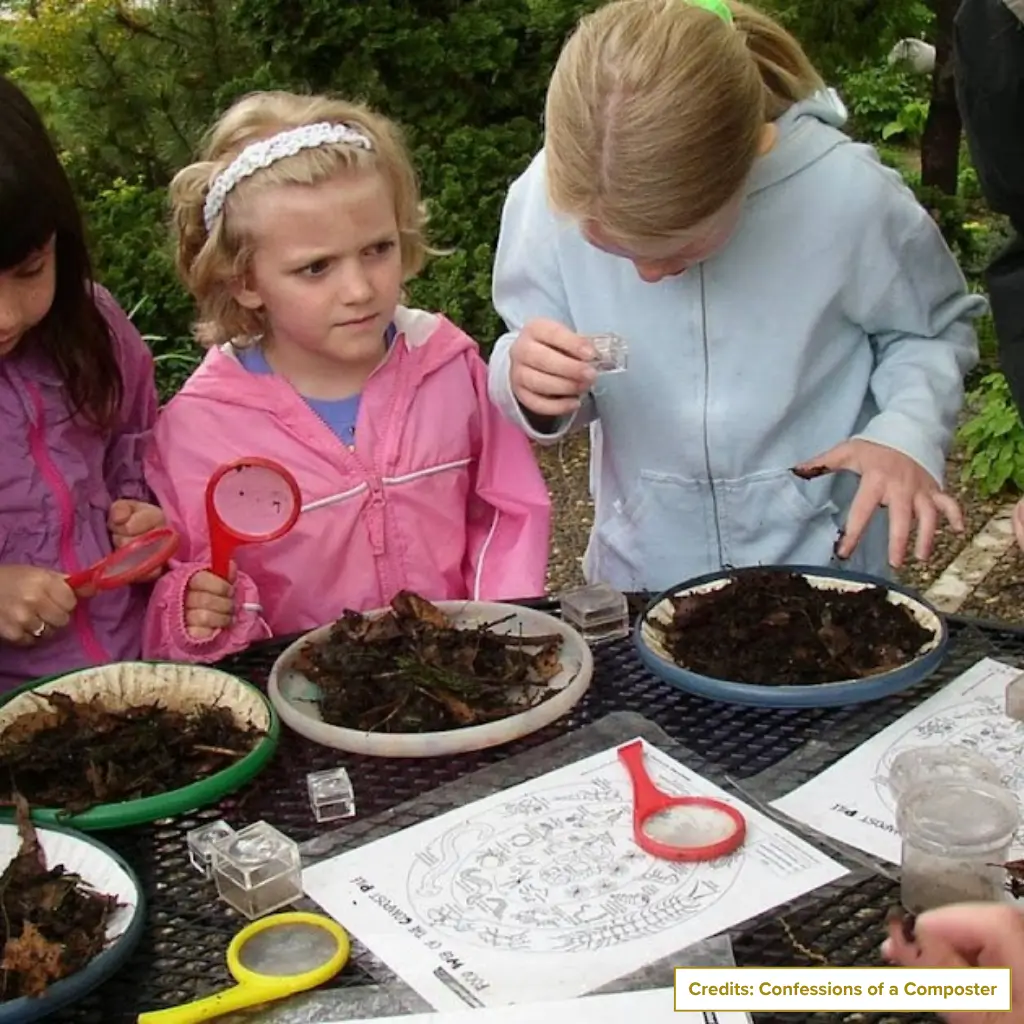
Step 7: Monitor and Maintain the Program
Consistency matters:
- Daily: student monitors check for contamination.
- Weekly: record the weight of diverted waste.
- Monthly: review progress and adjust strategies.
Track key performance indicators like weekly pounds diverted, contamination rates, and cost savings—Troubleshoot by simplifying signage or adding supervision if contamination exceeds 10%.
Step 8: Use the Finished Compost
Your compost can fuel gardens, enrich landscaping, or be donated to community farms. Schools often integrate compost into projects like pollinator gardens, tree plantings, or vegetable beds.
For private school cafeterias, composting can also showcase environmental leadership, reinforcing their commitment to preparing students for a sustainable future.
Common Challenges and How to Overcome Them
- Contamination: Students throw trash in compost bins.
- Solution: Station volunteers near bins, improve signage, and simplify sorting.
- Odors or pests: Poorly managed piles can smell.
- Solution: Use sealed bins indoors and regularly turn outdoor piles.
- Participation gaps: Not everyone feels motivated.
- Solution: Run fun campaigns, contests, and highlight success stories.
- Limited space: Some schools lack outdoor areas.
- Solution: Use off-site partners or a hybrid system.
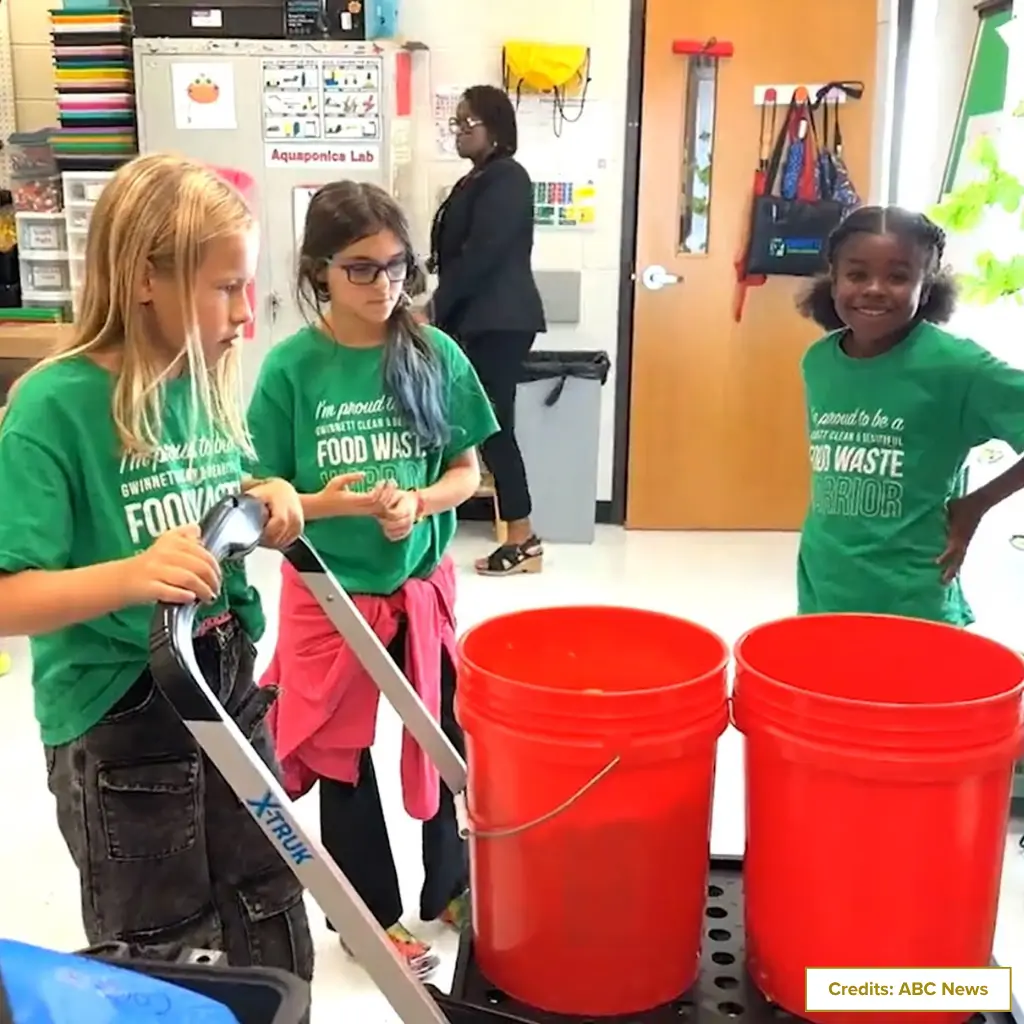
How ICC Supports Sustainable Cafeteria Initiatives
As specialists in modern cafeteria design, ICC helps schools integrate composting with broader initiatives like:
- Navigating federal grants to support sustainability projects.
- Aligning efforts with the National School Lunch Program requirements.
- Providing design insights that make it easier to manage a school cafeteria efficiently.
- Supporting school cafeteria workers with tools and training that make composting manageable.
Here’s a practical three-month timeline ICC suggests:
- Month 1 – Plan & Pilot: Conduct a waste audit, form a composting team, and select one pilot location.
- Month 2 – Train & Test: Run a two-week pilot, train cafeteria staff, and involve student volunteers.
- Month 3 – Scale & Celebrate: Expand to the cafeteria, start regular collections, and host a launch event celebrating results.
By viewing composting as part of a bigger picture including how to reduce food waste in schools, improve efficiency, and maintain safety ICC ensures cafeterias are healthier, more modern, and financially sustainable.
Composting and the Future of School Cafeterias
The cafeteria of tomorrow is greener, more efficient, and more student-centered. Composting is a cornerstone of this evolution. Alongside sustainable menu planning, eco-friendly equipment, and wellness initiatives, composting positions your cafeteria at the forefront of innovation.
By embracing these changes, your school contributes to the future of school cafeterias and creates a culture of stewardship. Students learn responsibility, teamwork, and the power of everyday choices—lessons that extend far beyond the lunchroom.
Final Words
Launching a cafeteria composting program isn’t just about managing waste but building a culture. Students see their banana peels, napkins, and sandwich crusts become valuable. Teachers find real-world lessons in sustainability. Administrators save money on waste hauling. Parents know a school that models environmental responsibility.
Start small with a pilot, involve students as leaders, and scale as your school builds confidence. With Ingenious Culinary Concepts as a partner, your cafeteria can join the growing movement toward waste-free, environmentally conscious dining spaces. Composting turns everyday actions into powerful lessons for life.
Need help creating a waste-free cafeteria? Contact us today to get started.
FAQs
How much does it cost to start a composting program?
Costs vary depending on whether you compost on-site or contract with an outside service. Many schools offset costs by reducing trash pickups and applying for grants.
How do we start a composting program?
Begin with a waste audit, form a team, pick a composting method, set up bins, and train students and staff.
What are the primary composting methods schools can use?
On-site or worm bins, off-site collection by local farms, or a hybrid mix of both.

